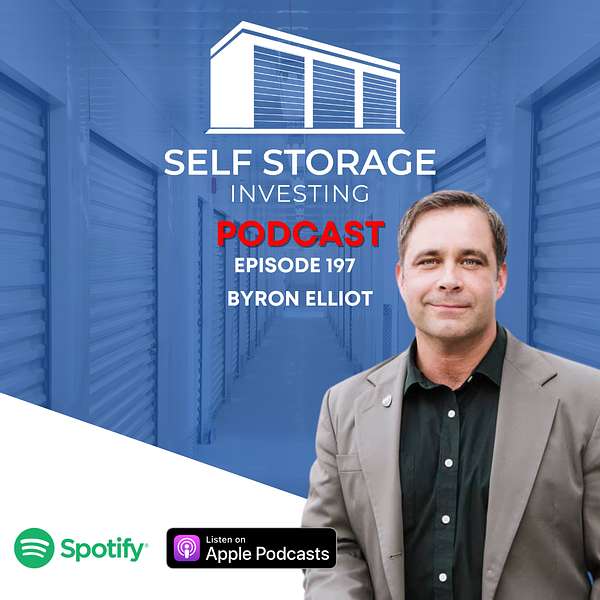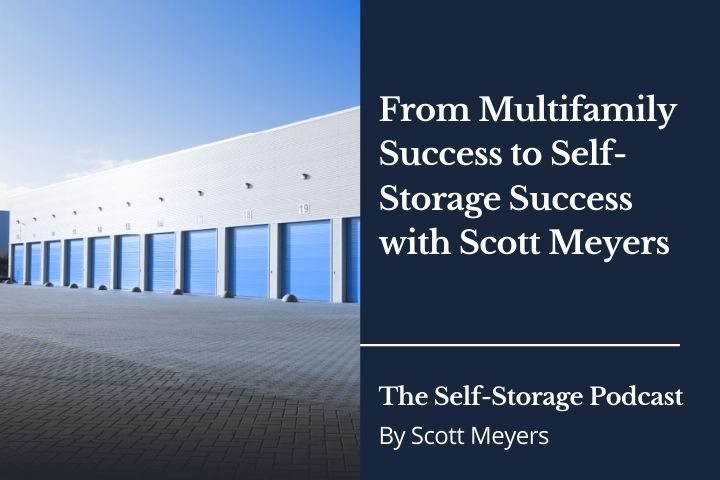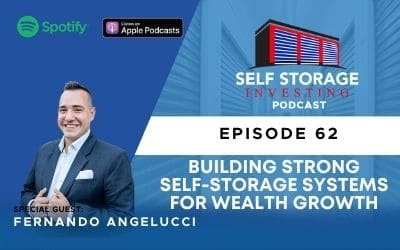What happens when changing regulations collide with private equity in self-storage?
Scott sits down with Byron Elliot of Three Pillars Law to explore the evolving landscape of fundraising and legal compliance in real estate investing.
From shifting SEC enforcement strategies to the rise of fund-to-fund models, Scott and Byron offer crucial insights into how operators can stay ahead in a tightening market.
They also dig into creative financing strategies, how to avoid broker-dealer pitfalls, and why transparency and solid legal practices are non-negotiable when handling other people’s money.
WHAT TO LISTEN FOR
04:40 – SEC enforcement and the impact of stricter penalties
17:45 – Distressed assets: Opportunity amidst market shifts
20:51 – Creative financing solutions: Owner-carry notes are back
39:54 – Byron’s advice for navigating private equity
Leave a rating for this podcast with one click
CONNECT WITH GUEST: Byron Elliott, Esq. (Managing/Founding Partner Attorney)
Website | LinkedIn | Facebook
CONNECT WITH US
Website | You Tube | Facebook | X | LinkedIn | Instagram
Follow so you never miss a NEW episode! Leave us an honest rating and review on Apple or Spotify.
Episode Transcript
Announcer (00:03):
This is the Self-Storage Podcast with the original Self-Storage expert, Scott Meyers.
Scott Meyers (00:12):
Hello everyone and welcome back to the Self-Storage Podcast. I am your host at Scott Meyers. And on today’s episode, we have a very special guest, a good friend of mine and business associate Byron Elliot of Three Pillars Law. And so we’re bringing up Byron on because we are seeing well many changes in self-storage these days, many changes in the marketplace and financing, but also in private equity. Byron and I have been working together for a number of years. He sets up all our syndications works on our funds, our fund to funds, and really anything that involves a security as it comes to raising private equity in our business, everything goes to and through Byron. So Byron, welcome to the show.
Byron Elliot (00:50):
Awesome, Scott, thank you so much. Appreciate the opportunity to talk to you again.
Scott Meyers (00:53):
Yeah, yeah. Well, I thought it’d be interesting to, once again, it’s been a while since we’ve kind of had a chat openly and publicly to understand just what’s coming down the pike, what are you seeing out there in the marketplace? But first of all, if you would, well give Self Storage Nation a little bit about your background and your bio, and then we can jump into some of the things that you’re seeing in the marketplace right now.
Byron Elliot (01:12):
Happy to do that. So I’m one of the founding partners of Three Pillars Law, as you mentioned. We are located just Self of Denver, 20 to 25 minutes depending on traffic. We have, I think, what people would call a boutique firm with three to four full-time staff and a handful of counsel attorneys. We spend about 90% of our time in this space working with real estate entrepreneurs who want to legally and ethically use other people’s money to acquire real estate assets. We help them navigate the securities laws. Me personally, this is a second career for me. I was in the military for 24 years. I retired back in 2019 and we’ve been doing this legal work for seven, eight years now. Another kind of fun fact is we’re also operators. So we’ve syndicated 10 deals now in various asset classes, mobile home parks, mixed use, multifamily, single family. So not only get to learn about the securities laws, but property management, toilets, termites, tenants, all of those things.
Scott Meyers (02:18):
Well, again, that’s why we’re working with you, and that’s the reason why we wanted to have you on now today, because again, our environment is ever-changing. I think we all get a little bit too comfortable, and when I say we meaning us as sponsors and syndicators, and although I’ve not challenged the laws or pushed the limits, I have pushed your staff in several areas in putting together our operating agreements and our ppms just to make our projects more enticing and kind of set ourselves above some of the other syndicators, our competition out there in terms of how we can raise capital and make it not only palatable for these folks and as well as profitable, but it just really simple and easy for them to be able to invest with us. But simple and easy isn’t always the best way to look at this, and that is your job is to not make it simple and easy for us, but to keep us legal. As you just mentioned, you’re having these conversations behind closed doors and in rooms that we don’t have access to with regards to the SEC and those who are enforcing the rules and the laws. And so I wanted to touch base and just have that conversation to see what are you seeing in the landscape these days? Is there anything changing, anything coming down the pike, anything that we need to be aware of, good or bad that Storage Nation can take with them as they head out and continue their fundraising efforts?
Byron Elliot (03:36):
Yeah, that’s a great question. I’ll share an experience that I had just last year. I attended, I think it was the 52nd annual Rocky Mountain Securities Conference or symposium. So if you ever want to have a hard time sleeping, I can share some notes with you from that conference. But I’ll kind of distill down high level what the Securities and Exchange Commission are looking at when it comes to these private equity offerings. One of the themes throughout the day on this full day conference was the SEC being undermanned under-resourced and understaffed, and how they’re going to approach enforcement actions moving forward. So one thing that the commissioner highlighted that the current penalties that they have are really not having the real deterrent effect on issuers and sponsors. There are some sponsors out there that aren’t filing form ds, which is kind of very basic blocking and tackling thing that needs to be done in these private equity offerings.
(04:40):
There’s people that are engaging in broker dealer type activities. There’s people that are materially misrepresenting and omitting certain facts in their private equity offerings. And so they’ve found that a lot of issuers and sponsors will just suck up the cost of penalties and fines. They’ll run the risk of engaging in that type of behavior because the deterrent effect just isn’t there to prohibit them from doing those type of activities. And so high level, some of the initiatives that the SEC has talked about is obviously imposing a little bit stiffer penalties, but also taking a look at not only the issuer or the sponsor team, but in some cases, even though service providers like myself, attorneys that are helping them prepare, offering documents, CPAs that are preparing K ones and tax returns and such, or even helping to prepare pro formas and things of that nature. So high level, it appears the SEC is going to ramp up the scrutiny on private equity offerings because the amount of capital being raised and deployed in this private equity space under these neat little Reg D exempt rules is just exponentially getting greater and greater. And so they’ve realized that they’re understaffed and can’t really manage enforcement. They would like to.
Scott Meyers (05:59):
Alright, well, I got a lot of questions surrounding each one of these pieces that you mentioned. So they are undermanned, and so in order to combat some of this, these stiffer penalties means that they won’t have to, they feel as if they won’t have to police this as much because now it’s going to be a greater deterrent if there are stiffer penalties and fines that there will be less instances of either LPs that are ratting ’em out or complaining about some of these issues. Is that what you’re getting at with regards to the undermanned comment?
Byron Elliot (06:33):
Yeah, I mean, this is kind of a typical legal theory. It applies in criminal law as well. You take a look at what is the potential penalty or fine for engaging in a certain type of behavior, and if what’s being imposed at the time isn’t enough to deter that type of behavior, it’s very common to ramp up the consequence. And so I think that’s the notion here that we’re looking at. And then I’ll give you an example. The state of Oregon, they’ve actually roped in service providers as a potential defendant in these types of cases. And so I think you may see high level in the industry a little bit higher scrutiny from your attorney or your CPA when coming to them with a potential deal and probably just going to be a lot more cautionary in how you approach dealing with prospective ambassadors, especially retail investors in these exempt offerings.
Scott Meyers (07:27):
Well, I mean certain it goes without saying, if you look at the countries that have stiffer penalties for stealing, like cutting off a finger or a hand, then there’s less thievery. And so I guess it does work in other forms of law as well. But let’s talk about bringing in third party folks. We’re talking about our CPAs in, so does that mean that there’s going to be a good list, an approved list or any type of say, accreditation or what does that look like? Or do they feel that the penalties and roping them in is just going to be a deterrent enough that these folks are not going to try to get away with anything and they’re going to dot i’s and cross more t’s than they have in the past?
Byron Elliot (08:08):
Yeah, no, I think it’s a great question. I think at the end of the day, those service providers, because there are regulatory agencies that manage their licenses, they’re already going to be a little gun shy about working with clients that are operating in the gray. I mean, you’re talking about a CPA and you’re talking about architects and you’re talking about attorneys. If they’re engaging in this type of behavior and they’re found to be engaging in this type of behavior, you’re talking about that person’s livelihood. And so I think that is enough. The fact that you would rope them into any potential investigation is probably going to have that deterrent effect. And again, I think you’ll see that people are, service providers are a little less aggressive than they may have been in the past few years. That’s me reading the tea leaves.
Scott Meyers (09:00):
Well, and I would say that’s true because we’ve worked with some other folks in joint ventures in which their CPAs, we found they’re just not up to snuff, and we don’t feel confident in heading into those, into a cog arrangement or joint venture arrangement. If we feel that the CPAs on the other side aren’t familiar with SEC law, that’s just at that point, we either stop or we state, Hey, we’re going to have to use our folks or this firm because I think we may be at risk here. There may be some liability because it doesn’t sound like the firm or the individual that you’re using right now. He may be a good friend of yours and a fraternity buddy, but we don’t think we want ’em in this deal because we’re playing with some different, more commons than zeros and stiffer penalties and a liability here. So is that fair to say? Is that what you’re seeing in the marketplace?
Byron Elliot (09:46):
I think that’s a great practice especially, and this, and the audience knows this is real estate. It’s such an attraction because there are tax benefits. A lot of these offerings, whether you’re talking opportunity zones or you’re just talking about depreciation and allocation losses and things of that nature. It’s incredibly important I think, when picking these service providers to not only find somebody who deals in this space the majority of the time, but they’re very familiar with those particular tax concepts. So yeah, I think the point that you’re making is a great point is that you’ve got to make sure that your professional service providers are the team that you want for that particular deal. It’s so important.
Scott Meyers (10:27):
So let’s talk about, you mentioned the proformas as well, and so this is a piece that I hadn’t thought of, well, probably because it hasn’t been on our radar, if this is something they’re going to begin to scrutinize. When you talk about proformas, not everybody, almost everybody uses a CPA that may not be in-house or in conjunction with somebody that is in-house to handle the books, the tax returns, the K ones. Same thing with, we hire you on the attorney side to do legal docs operating agreements, and also we have separate attorneys that look at the purchase agreements in the real estate side versus the SEC side. So we’ve got at least two sets of attorney firms, attorneys and law firms that are looking at our projects. But when it comes to underwriting and financial analysis and looking at the financials and proformas, I would say I would venture to say that for the most part, some of these folks may be using an outside firm, but not necessarily for compliance or to make sure that it’s correct, but it’s mostly just from a time standpoint or they’re doing ’em on their own from an Excel that they built or bought.
(11:34):
And in some cases, if they built it, it may have some incorrect formulas. And so that’s a piece that I would say is significant and significantly new. What do you think that’s going to look like?
Byron Elliot (11:45):
Yeah, I would tell you when I talk with a client and our clients, they run the gamut. We’ve got some experienced operators, people in your space, but we also deal with a lot of clients that are new. They’re just successful at real estate, but it’s their first time taking private equity and other people’s money to fund their deals. And every kickoff discussion that we have, the number one thing that I tell them is you’ve got to have a financial model that’s grounded in reality and that supports those forward looking statements that we’re going to put in A PPM. It’s never going to be a hundred percent, and we know this now given the market and cap rates changing and everything that goes along with it, but as a sponsor and issuer, you’ve got to be super familiar with the proformas and ideally you’ve got another set of eyes or two sets of eyes or professional set of eyes looking at those because not only do you have to be able to articulate it in a way that makes sense to a prospective investor so they can understand, but it’s got to be grounded in reality, right?
(12:46):
That’s the biggest challenge we talk about. What’s going on right now in this space is we have operators who had very good looking forward-looking statements or proformas that they built three or four years ago, and now the environment has changed and they weren’t very conservative, and now you’re talking, there’s opportunity for conflict there. Investors aren’t getting the returns that they thought they were promised that were communicated to them. And I think that’s the opportunity for conflict, and that’s where sponsors and issuers have a hard time is if they don’t understand that model, they’re not building out their offering in a way that’s supported by that model. So they’ve got to be really intimate with those forward, forward-looking statements.
Scott Meyers (13:27):
And I would say that there’s a difference between being able to raise capital and the ability to raise capital close on a deal, build the value and exit and hit or exceed your projections. There’s a big difference there. However, for the investor, the LPs coming into this project, they don’t know unless they look at the historical track record of somebody who’s been at this and has been through that a full cycle many, many times and has done so through perhaps a recession or two before this. And so when we talk with our LPs, obviously it’s one of the benefits of working with us is to not discredit the rest of the folks out there, but to say, here’s some of the things that you need to be looking for, which is just that and the fact that this is our third cycle, our third recession that we’re going to be going through, and we can see it a little further down the road.
(14:15):
We know what we’re doing. We are the adults in the room and here’s why. And here’s our track record and our history, not just since the bull market that we’ve just had three or four years ago, but for the past 20 years, here’s what our track record looks like. And so that is one of those pieces that is so important. And for the folks that are looking to raise capital in the beginning, I think it’s real tempting. I’ve had these conversations with some of these folks that said, well, it’s a development project, and I’ve heard that in order to entice investors to invest in my project, that’s a development, it’s a higher risk. And so it has to have a two in front of it in terms of an IRR, meaning 20% or greater IRR or whatever the number is. And so they begin to work their financial model and pull levers within their Excel to get there.
(14:56):
But it’s just based on getting there. It’s not based on the reality or anything else. And so everything that we do from an IRR standpoint and setting that comes through the lens of our consultants and through the feasibility studies, all of our capital raises, as you know, are based upon that. And so we’ll do the back and forth with our consultants, but ultimately they have to bless it if we say, well, hey, we found some more competition. Or, look, the rates are a little higher than what you show, and I believe that this should be tweaked, and it’s either to the better or for the worse of our project either way. But if we find it’s a more competitive market, then all that means is that if we want to get a 20% IRR per that example that I just gave, then that means that we need to give up more in terms of a split.
(15:40):
It doesn’t mean that we keep our split and we jigger the numbers to make it look a little more flowery. And I think long gone are the days, I shouldn’t even say long gone as of just recently, our LPs, our investors, our equity partners that come alongside of us, they’re pretty savvy. They’re getting pretty smart. Of course, we train ours, that’s one thing. But the folks that come to us that have heard from us from the outside, they know now to begin to look at those performance. And if you’ve got a linear 3% increase in rent over the next five years and a 2% or two and a half percent linear increase in operating expenses, they don’t buy into that anymore because they know if you’re buying value add properties, you’re going to have a runup of everything in the beginning and then it’s going to level off, and then there’s going to be seasonality depending upon where the facility is, and it’s just no longer plugging in numbers and plotting along and hitting to a point that’s four years down the road or five years down the road and call it a day, that’s not going to fly anymore.
(16:35):
So this is going to be an interesting piece to see how this all plays out.
Byron Elliot (16:40):
Yeah, I would agree. And then I would just tell you from my vantage point in seeing new clients come in and some of the trends in the space with the offerings that we’re doing is it seems there’s almost a cuing effect going on right now. So we talked about operators who started out 3, 4, 5 years ago on a particular deal, and they had some unrealistic exit cap rate, and they anticipated refinancing at four and a half percent or whatever it may be, and now they’ve gone not quite full cycle, but they’ve executed their business plan, but they don’t have a prospective buyer or whatever else. So we’re seeing a lot of stuff in our space where people are pulling together certain fund models, distressed assets, an opportunistic fund where you’re gobbling up some properties that they need to exit. And so we’re seeing a lot of that in our space right now. It definitely seems like there’s a shift towards the more experienced operators with better systems and processes and people. I think they’re going to come on the far side doing very, very well
Scott Meyers (17:45):
Being opportunistic is always proven well. We’ve seen that from coming out of the great recession as I looked around afterwards, all you needed to realize is, well, just a doubling down of what everybody’s already realized, which is Cassius King. And if you have the ability to invest and act swiftly to be opportunistic when there is, I hate to say blood in the water, but when there’s distress, if you can come alongside and partner with somebody as a joint venture or a fund of a fund and bridge that gap in the shortfall and to step in, people will pay mightily for that, not only to eke out an investment for their investors or their deal, but also not to lose everything. And so there are huge opportunities out there or to be able to end up with the keys to the place at the end of the day, if it is already too far gone and either the seller calls you the owner, the seller or the lender has said, gives you a tip to say, Hey, this thing’s about to go, do you want to swoop in so we don’t have to foreclose?
(18:47):
We’re already seeing when we have been seeing some of that. I know the multifamily market that you see the troubled loans in the trillions in terms of troubled debt in multifamily, and it is in deep oo. And so there’s lots of opportunities there and there’s lots of hedge funds and other equity partners and institutional money that they remembered those lessons from the Great Recession back in oh nine and 10, and they’re rinsing and repeating and doing it all over again. We are seeing that a little bit in our space, and it’s mostly from what you had just touched on the areas that you touched on, which is what we see some abandoned development projects, which during lease up, they had to cut rates even lower to be competitive, to buy occupancy because of the market halted due to the lack of building and the lack of movement and the single family housing side, which affects us greatly.
(19:39):
But also the high cost and the high interest rates at a refi, as you just mentioned, have caused all these folks to come very short of the runway and now they need a bridge loan. They need some additional money to get to the finish line and get these things stabilized. Again. Some of them, if they’re not able to make it, yeah, they’re having to take on more money or partners, and that is the place that we’ve been operating in and looking out for right now. There’s existing facilities that we’re still buying and putting into our fund, but it’s those conversions and those construction projects where we see the most upside and the most opportunity that we’ve been focusing on.
Byron Elliot (20:11):
Yeah, lots of opportunity. I guess one other thing that’s kind of interesting to me is over the last however many years, there’s a lot of discussion about creative financing. Any opportunity for creative financing is a win-win. And I’ve seen a lot more owner carry notes on facilities, whether it’s multifamily, the storage stuff, whatever. I mean, that’s one thing that I think is encouraging is at the end of the day, regardless of what the lending environment looks like a lot, there’s people that are ready, the mom and pops, they’re done, they’re ready to retire. And so I’ve seen kind of a surge of some creative financing opportunities for buyers out there.
Scott Meyers (20:51):
We definitely had to dust off our strategies on how to offer and present seller financing to the sellers and show them the benefit of that from a tax standpoint to be able to defer some capital gains and how they can actually make more money on their facility by selling it that way. And of course, they have to be in a position to be able to do, to want to do that, and then just to really understand it and hopefully not have a CPA on the other end who’s guiding them away from it, even if it is in their best interest and there’s something that they want to do. But I want to come back. I want to circle back to Byron. We talk about some of the investment vehicles that you’re seeing out there where people are creating a, I’ve talked to where it was very rare for me to have conversations with folks that were starting a fund of a fund or utilizing our folks like my friend Travis over at trivest to put together funds to be able to invest in other people’s projects, whether it’s a shortfall on a new project or to offer some bridge financing and to be a cog P coming into an existing project.
(21:49):
Tell me about some of the activity and if there’s any different type of or unique fund structure that you’re seeing for these folks that are now pivoting with the marketplace and providing the funding for these projects that need a little extra runway.
Byron Elliot (22:02):
So one thing that’s, I guess gained some traction in our space, I think everyone’s familiar with the Reg D exemptions, the mechanism you use under the securities Act at 33 to actually raise capital, right? Rule 5 0 6 B and 5 0 6 C, and then when you’re talking about funds, we have to sometimes do another level of analysis, and that’s where is that capital being deployed? If you’re purchasing a real estate asset, there’s less analysis that goes into that. So if you’re starting a real estate fund that’s specifically buying real estate or there’s this beautiful little exemption called three C five that’s gaining some traction and that allows you to not only purchase real estate, but invest a certain amount of your fund capital into real estate like investments, and that can include collateralized mortgages, so notes for operators that need that kind of financing that you’re talking about.
(23:00):
And so we’ve done a handful of those funds in the last six months or so, which provides the sponsor some flexibility. I would tell you it’s not for somebody who’s looking to jump right into some sort of fund model, it’s a little bit more sophisticated than that. You have to be very certain that what you’re acquiring with that capital deployed meets the definition of that real estate type investment. And then if you find yourself out of tolerance, so there’s a certain percentage of your capital that has to be deployed towards those activities, and you have a little latitude for the last 20% to invest in some other deals, but you have to make sure that your business purposes are aligned to meet the three C five exemption. So that’s one thing that’s definitely gaining some ground on the fund side of the house because people are realizing you can save some costs on the legal side of the house by setting up one fund structure that lets you both acquire real estate loan money with the right kind of borrower and even CO GP in certain deals between funds and other issuers. So it’s something to certainly look into. I’m happy to have a discussion with anybody who wants to talk about that. We’ve got a little white paper that we put together, but that’s one structure that we’re seeing is more common in gaining some ground right now.
Scott Meyers (24:17):
Give an example of probably the smoothest, easiest, safest way of being able to invest some of those dollars and setting up one of those funds into said project. What would that project look like in the marketplace that would fit the bill?
Byron Elliot (24:31):
So there are some sponsors or issuers that have a real good track record in a certain asset class. So let’s say Scott wants to set up a fund that allows for the acquisition and you would describe in some detail the type of acquisition that you would do. I would advise you to disclose to the investors kind of an avatar of the type of deal that you would acquire, whether it’s you like to do ground up or whether you want to do value add or conversion or whatever it may be. And then in the fund documents, we’re still going to disclose that in addition to these types of opportunities, we’re going to lend to borrowers in some sort of collateralized position on debt. And so instead of having capital that’s sitting there underutilized while you’re waiting to find a project, you’ve got prospective borrowers out there that you underwrite as the issuer and you issue debt to them in this environment, you’re looking at 10, 12, 15% for 12 month, 24 month note with maybe a point or two on the front and back. So it’s flexible from an issuer perspective because you can keep that capital churning and you’re still earning some returns for your investors even if you don’t have a project in the pipeline.
Scott Meyers (25:47):
Good. And there’s an awful lot of that out there right now. There’s a transactional funding for, as we mentioned ahead of our call, there’s a lot of folks that are looking to raise capital right now that are just coming shy. They’ve got a list of investors that normally come alongside of them and the next project comes along and they expect it to fund in this amount of time, and they’re going to raise this amount of capital just like they’ve done in the past, and they find it is taking twice as long and they need to gain more investors or have to bring somebody else in because they’re $500,000 short, a million dollars short, $2 million short. And so this is call it a transactional funding on the private equity side, I guess is a good way of categorizing it seems to be gaining in popularity. There’s a whole lot of folks that are looking for this to get things across the finish line once you’ve started. They almost can’t turn back at this point. There’s so much dollars that are outlaid by the time they get to the capital raising efforts. There’s almost too much at risk to not go forward at this point.
Byron Elliot (26:38):
Yeah, I agree. And then a couple years back, even before the current lending environment, we took a look at on our single asset syndications or even a portfolio syndication, instead of just having the straight up equity component, which is most commonplace, especially in the first, second, third type of offerings as people are easing into this space, we would offer an opportunity to add a debt component to the same offering. And so in that scenario you just described, we get a property under contract, we’re going through due diligence and we have a shorter raise period. And that allows the flexibility where you can fast and furiously raise equity, but if you come up short on the equity side of the house, you can issue notes to prospective investors who maybe they don’t want their capital tied up for 3, 4, 5 years. They want it tied up for 12 months or 24 months with a nice little return. You continue to raise equity at the same time, and ultimately you can balance that capital stack in the way it wanted without jeopardizing the closing on the property,
Scott Meyers (27:42):
Which is key because there have been many instances when we haven’t raised all the equity, but we have closed on the property because we had the loan in place and most of the equity at least enough to be able to close it and then continue to backfill. And so instead of backfilling the equity piece, I mean you just convert it or swap it out for short-term debt and then be able to move along as needed. And the speed in the marketplace and the flexibility seems to be in higher demand than ever right now because there are so many unknowns and things are taking longer.
Byron Elliot (28:10):
Absolutely. Absolutely.
Scott Meyers (28:12):
Well, one of the other pieces that you mentioned as well is the challenges with people being called out as a broker dealer for the true actions versus what they’re stating in their offering that they are doing. Tell me how somebody may be dancing across the line of an infraction in that realm.
Byron Elliot (28:33):
Yeah, no, it’s a great discussion and it’s particularly relevant right now, again, with the additional scrutiny. But what we’re seeing a lot of times is people are trying to shore up their capital stack by pulling in, let’s call it cogs.
Scott Meyers (28:49):
And
Byron Elliot (28:49):
So there’s a couple things that we have to examine there. What is the relationship for this cog P relative to the actual sponsor of the deal? And you take a look at the activities that that person is being performed and how they’re being compensated. And so the biggest red flag, anytime you’re discussing a potential relationship with a cog P or whatever it may be, their compensation, if it’s expressed as a percentage of capital raised right there is a big red flag. You got to take a hard work at that.
(29:22):
And there’s so many options out here. For example, if I’m an issuer and I’m coming up short on my raise, there are so many options out there. There are people that are consultants that will conduct certain activities to put you in contact with prospective investors. There are actual broker dealers. There are people who come on as a cog and perhaps they have a network where they feel that they can raise enough capital pretty quickly to close your gap. There’s so many options out there, but at the end of the day, I think you really have to take a hard look at how that person is being compensated. I get this question in the office no less than five times a week from people that are either getting into this space or they’ve been in a space for a while and they want to work around to close a capital gap. It’s how can I compensate this person?
(30:10):
So that’s the big red flag right there. And then on the cog side of the house, any person who’s being considered a cog and it’s going to take part of the promote and some of the fees associated and carried interest in addition to raising capital, they’ve got to have some additional material participation on the issuer side of the house. And so what is material participation? These are the kind of vague terms that keep attorneys in business, so we have to interpret these, but basically it’s the activities that you’re being performed, do they materially contribute to the success or failure of the business?
(30:48):
And so any of these relationships that you’re engaging in, and it’s very important to make sure that one, you identify the appropriate relationship and how compensation is made, but then also reduce that to a writing, right, handshake agreements and such. I think you want to make sure to survive any sort of scrutiny that any side letter agreement, joint venture agreement, operating agreement, whatever you have it very clearly details who’s performing what activities and how they’re being compensated outside of a percentage of capital raised. And the reason I caution against that is we are in a time now where deals aren’t performing as well as in some cases as well as people at hope. And so inevitably of investors complain, maybe seek an investigation of some sort. Well, as we were talking about earlier, we’ve got an understaffed SEC and most likely securities divisions at the state level. The first thing they’re going to do is they’re going to subpoena. And when they subpoena, they cast a really wide net. So even though the investigation or complaint may be completely unrelated to the fee structure being paid to the principles of the deal, they subpoena an operating agreement and an operating agreement doesn’t clearly spell out you’re being compensated not just for raising capital, but for all these other activities that you’re performing. There’s some exposure there.
(32:08):
So I definitely, definitely want to be mindful of that. There’s one other case that I wanted to share with you, and this is kind of making its rounds. It’s a case out of Texas, and it’s in the context of a fund to fund operator. So they set up a fund to funds, the purpose of which was to invest in another deal. So we’re selling a security pursuant to one of those Reg D exemptions, and then we’re claiming an exemption on the investment company act, but the sponsor, 6% of capital raised and capital deployed as a fee, and the SEC scrutinized that they found that to be synonymous with broker dealer type activity. I hadn’t seen that before. That’s interesting development to me. But that’s the second piece I would caution against is just making sure that whatever fee structure you come up with, I think is not considered transaction-based compensation and broker dealer type.
Scott Meyers (33:10):
Yeah, well, those are just the beginning pieces to that. And as we’ve learned and as you’ve taught us that is that it should not be a percentage of capital raise, first of all. I mean, that’s the first red flag, and then it should be a fee, and that it is also tied to other duties and responsibilities. So not only is it not a percentage, but it is a flat fee of anything that we do for coming into from that place. The second piece is that we have equity on the GP side, and then the third piece is within that equity, it’s spelled out on the operating agreement. What we do, we have a seat at the table and we have responsibilities. So when there are meetings when the general partners get together that we’re a part of it, if you’re never a part of a meeting, you don’t know what’s going on or who the other gps are, then that’s also a red flag and that’s where you get in deep dodo.
(33:54):
And so anytime that we’ve brought folks in or I’m a part of any of these projects, we’re a part of those meetings and we record those meetings and there are our duties and roles and responsibilities. It can be voting, whether it is non tie breaking votes, but having a seat at the table and having a say and a vote in things as well as responsibilities are some of the ways that we do our best to make sure that nothing can ever happen. And of course, anybody could call and call us out or ask or scrutinize, but we certainly put everything in place to make sure that nothing happens and there is no gray area on our end.
Byron Elliot (34:29):
Yeah, I agree. That’s a great summary. The other thing to consider when talking about these cog P relationships is understand the more cogs that you have and the less about them, the more exposed you are. And so just understand as you pull in these people, even if it’s in the interest of helping to raise capital, you’ve got to make sure that you do some basic due diligence on them, some open source due diligence, maybe a background check, and understand that when they’re talking to prospective investors, they’re representing the company. So if they’re off the reservation doing whatever they want to do, misrepresenting and they’re making
Scott Meyers (35:09):
Blue
Byron Elliot (35:09):
Sky forward-looking statements that aren’t grounded in reality, there’s exposure for you as a cog.
Scott Meyers (35:16):
Also, if you’re a GP and every single one of your deals has a cog and you’re bringing somebody else in to raise the capital, that also inherently, if they begin to look under the hood of all your offerings, then they’re going to say, well, this seems to be not just a shortfall, this one project where you brought somebody, but it seems to be your mantra. This is kind of how you operate. And that itself can kind of speak volumes to the SEC as to how you operate and how you plan to raise capital.
Byron Elliot (35:37):
Agreed.
Scott Meyers (35:38):
Well, the last piece that I guess comment that I wanted you to weigh in on is, and I’m sure you’ve heard this before because you’ve heard it all, Byron, but that people do know that the SEC is understaffed, and there’s also this kind of unwritten rule or understanding from folks to say, well, unless it’s a big deal from a big name or a big operator, or a big amount of money, and a whole lot of folks going after a sponsor, that the SEC just doesn’t even bother. Even if they do get a complaint from a handful of folks in a syndication in which a million dollars was raised total and they’re unhappy with their returns or distributions or what have you, that the SEC just doesn’t bother with it, they never get around to it. So whether that’s an unwritten law or rule, or depending upon whether they’re staffed or not, that it is a piece that is, I guess maybe not widely accepted, but certainly is accepted in certain circles.
Byron Elliot (36:34):
Yeah, I mean, I think it’s a great point. I think one thing that’s important to note is that if in your offering and your offering documents, you’ve made the appropriate disclaimers and disclosures, right? You can’t account for every contingency under the sum, but you’ve made a good faith based effort to disclose what potential risks are with the property, this type of investment, this asset class, the fact that the company’s newly formed. Maybe there’s something about the geography that’s somewhat risky and affects the deal, but as long as you take the time and effort to disclose as much as you can, and then also follow the protocol to make sure that, especially if you’re dealing with non-accredited investors, that they have the level of sophistication they need to make an informed decision to invest in that deal. If you’ve done those things, you haven’t materially misrepresented or omitted information that’s important to the deal, at the end of the day, an investor can complain about a lack of returns. But if you’ve done the right things as the issuer, I don’t know that an investigation ensues. So I think that’s an important thing.
Scott Meyers (37:40):
And
Byron Elliot (37:40):
Then I advise my clients if they do, they want to operate in the gray, my point to them is, well, typically this is your profession or you’re pivoting into this profession from another profession. You’re going to build a foundation, you’re going to build a business, and the first time that you engage in bad actor type activity, you’re out of this space for 10 years. Why would you risk that to get an additional investor or two? Right? We have these beautiful little rules. The SEC has given us to raise private equity. It’s not terribly difficult to abide by the rules, and I mean, you can make a very nice career out of this, so why jeopardize that by trying to do something that’s unethical? That’s how I talk to clients. I mean, you can’t control client behavior, and there are certainly people in this industry that don’t adhere to those rules, but again, is the risk worth the reward?
Scott Meyers (38:37):
Well, no, it’s not. To your point, because that is something that I’ve never really had to tell myself. I just recognized from day one because the day I stepped away from my W2, I hope I never have to go back. And so if I lose my ability to raise capital, I lose my ability to grow my business or even invest in real estate any more than what I’ve got right now. That’s it. It’s game over, and I’m unemployable at this point. I can’t go back and work for anybody else. I’ve been out too long on my own. So no, I won’t jeopardize that. Not certainly not for one investor even on one deal, which you’re falling short. It’s just it is what it is. It just meant that’s call it karma. Call it God, look it out for me. If this deal isn’t meant to mean and I can’t raise the capital, I’m not going to do anything out to, once again put a square peg in a round hole or keep me from being employed in my own business and then have to go back and be employed by somebody else, it’s certainly not worth it on my end.
Byron Elliot (39:27):
I agree a hundred percent. I’m unemployable also, but I’m with you.
Scott Meyers (39:31):
Yep. Alright, well, Byron, thank you so much for your time today. It was good to be able to catch up, but before we head out, what are some parting awards of advice that you have for Storage Nation out there, whether it’s in the realm of raising private equity for their deals or just in general, some good advice that you might have for some of the folks out there to navigate the environment that we’re in?
Byron Elliot (39:54):
I think in addition to what we were just talking about and kind of staying on the straight and narrow immerse yourselves in these type of activities, these podcasts, these conferences, these mastermind groups, there’s no reason to learn through experiential learning on how to fail in real estate. There’s so much out there. You just got to immerse yourselves and then just make sure you’ve got a solid footing before you start using other people’s money. That’s basically crossing the Rubicon, right? You can lose your own money, but when you start dealing with other people’s money, you want to make sure you have a real good foundation and a real good team.
Scott Meyers (40:33):
A hundred percent. A hundred percent. Well, Byron, speaking of a fantastic team, how did they get in touch with you and get ahold of that white paper you discussed earlier?
Byron Elliot (40:42):
Yeah, excellent. So three pillars law.com. My email address is byron, B-Y-R-O-N, at the number three pillars law.com. Our website’s pretty easy to find. Happy to answer any questions, share any products that we have. We do a lot of work with people in the Scott Meyers Mastermind group, so if you’re net group and you reach out, just let me know. But here to answer any questions, help anybody that we can.
Scott Meyers (41:06):
Appreciate you. Byron, thanks so much for your time and looking forward to seeing you again soon.
Byron Elliot (41:09):
Thanks, Scott. Thanks for the opportunity.
Announcer (41:13):
Hey gang, wait three things before you leave. First, don’t forget to follow the Self-Storage Podcast and turn on your notification so you never miss another episode. And while you’re there, please leave us a five star review if you like the show. Second, be sure to share your favorite episodes and more via Instagram, and don’t forget to tag us. And lastly, head to the links in the show description and hit follow on Twitter and Facebook to get a front row seat with the original Self-Storage expert, Scott Meyers.
















